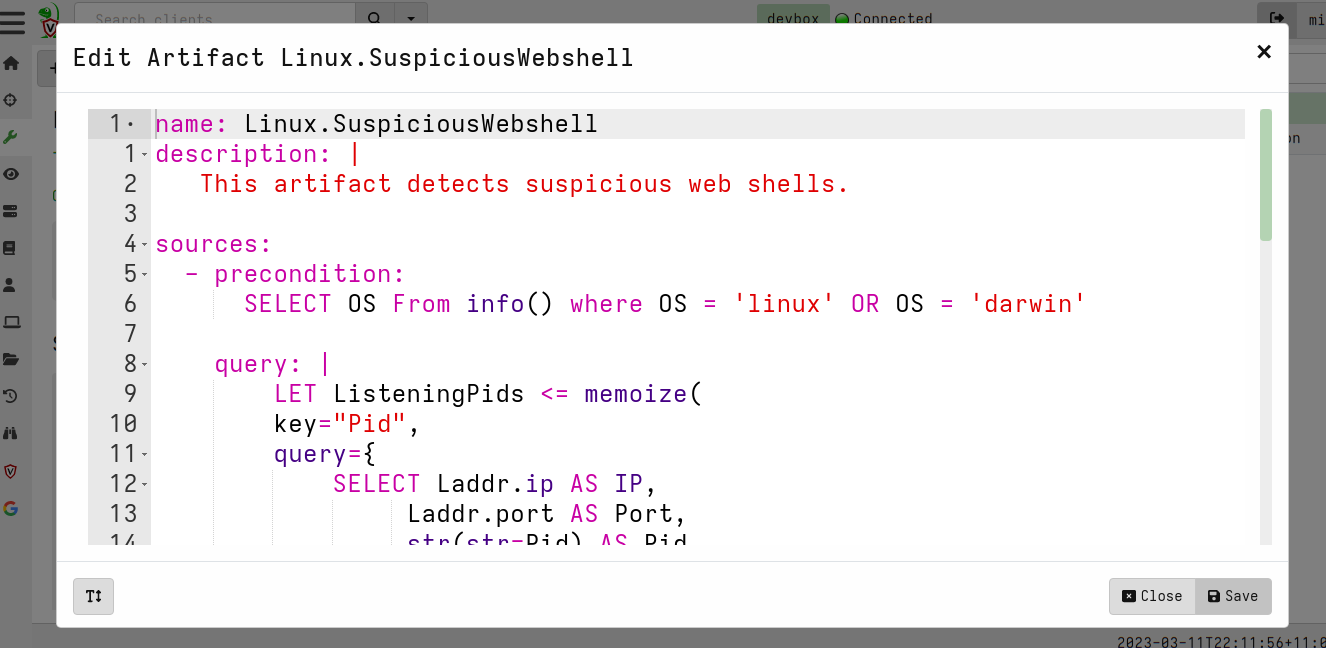<!-- .slide: class="title" --> ## Web shell ### A hacker's favorite backdoor 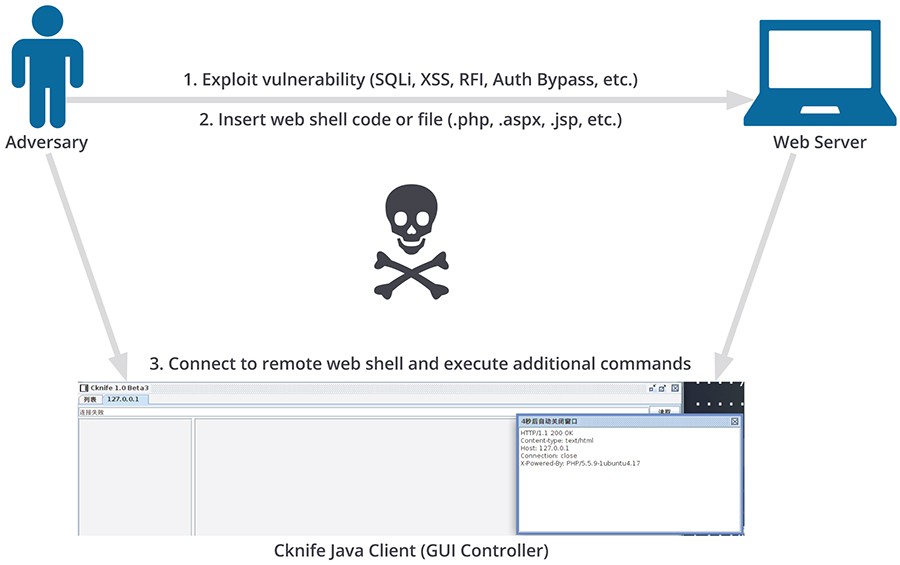 --- <!-- .slide: class="content" --> ## Web shell ### A hacker's favorite backdoor A webshell is a way for an attacker to obtain a shell over the web * Sometimes this is done by adding malicious active content (PHP,ASP,CGI) * Often it is installed as an additional service that looks like a web service * Can contain authentication and/or encryption. --- <!-- .slide: class="content" --> ## Web shell ### Exercise In this exercise we start an opensource web shell, typical of malicious web shells. ```bash $ git clone https://github.com/JiangKlijna/web-shell $ cd web-shell $ make $ ./web-shell -s -P 2020 -u admin -p admin -cmd bash ``` This creates the server web shell. (Alternatively download the Github release) --- <!-- .slide: class="content" --> ## Web shell ### The client Connect to the local webshell server using the client over HTTP (with the above username and password for authentication. ``` $ ./web-shell -c -H localhost -P 2020 -u admin -p admin $ ping www.google.com PING www.google.com (172.217.24.36) 56(84) bytes of data. 64 bytes from hkg07s23-in-f4.1e100.net (172.217.24.36): icmp_seq=1 ttl=114 time=27.9 ms 64 bytes from hkg07s23-in-f36.1e100.net (172.217.24.36): icmp_seq=2 ttl=114 time=27.7 ms ``` --- <!-- .slide: class="content" --> ## Detection ### Detecting the web shell via network How would we detect this webshell? * Search for listening ports and enrich Use the `Linux.Network.NetstatEnriched` artifact to look for listening ports. --- <!-- .slide: class="content" --> ## Detection ### Listening ports 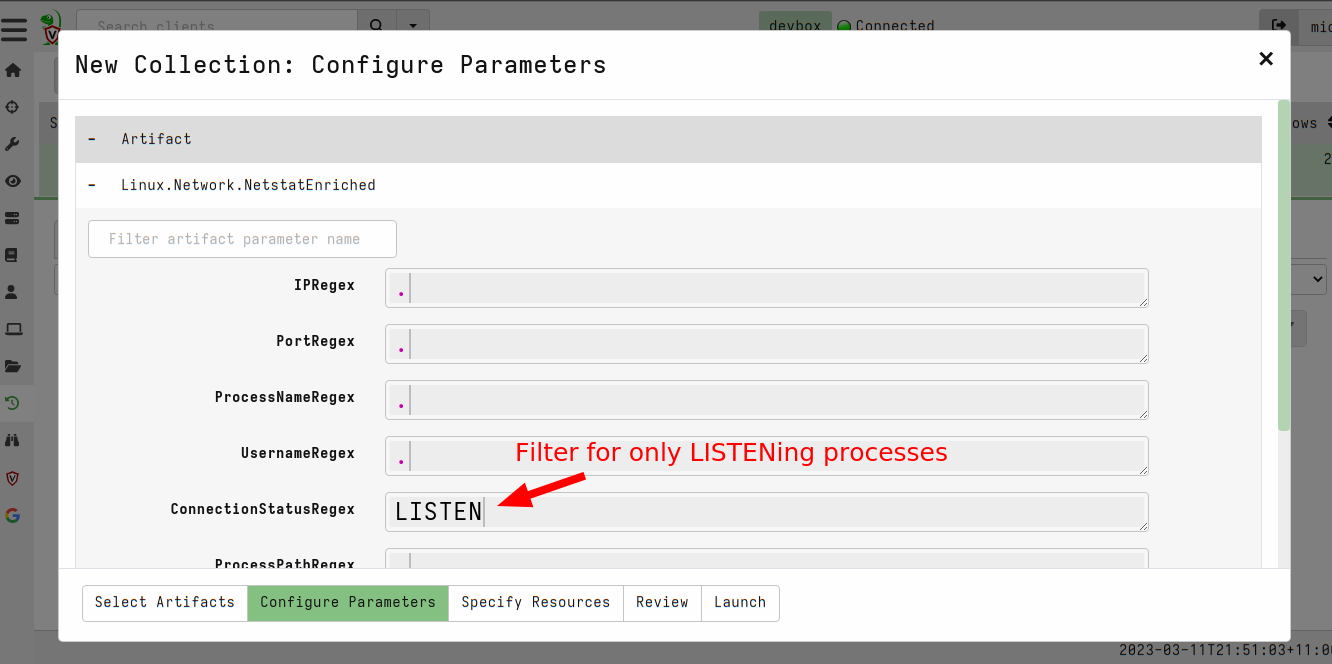 --- <!-- .slide: class="content" --> ## Detection ### Listening ports 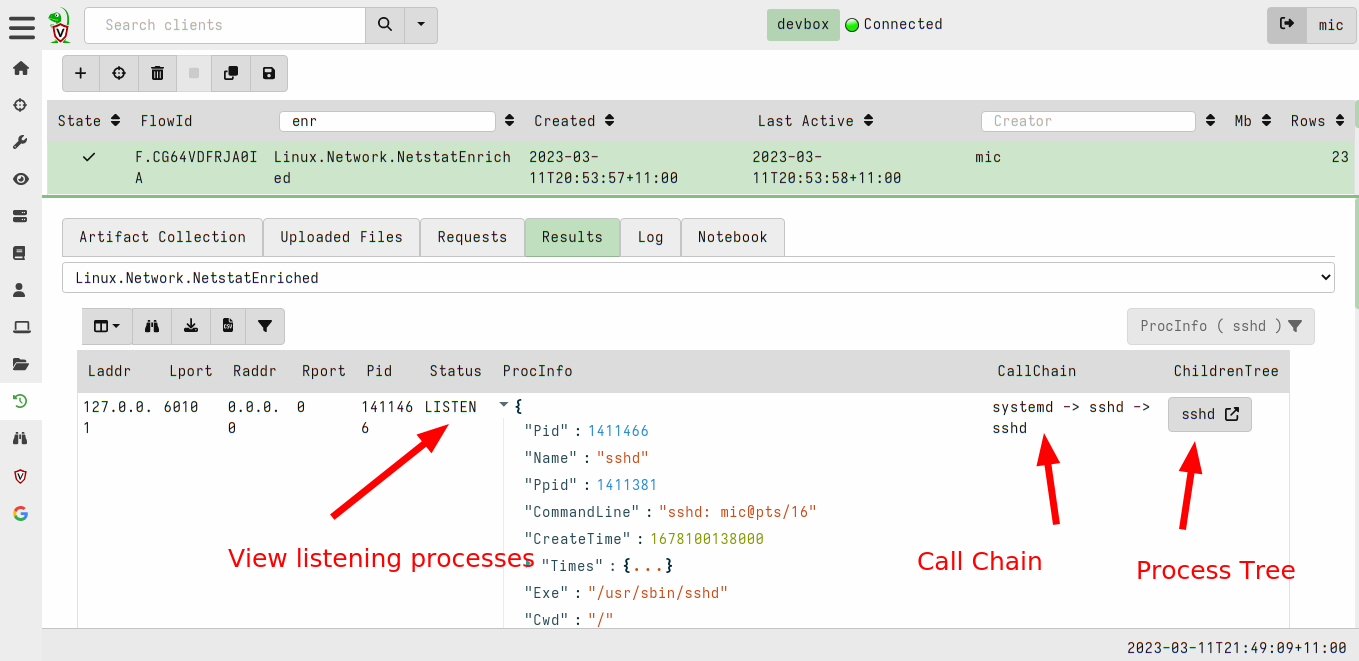 --- <!-- .slide: class="content" --> ## Detection ### Process Tree  --- <!-- .slide: class="content" --> ## Detection ### Looking in memory Some attack tools do not have files on disk 1. File may be packed/encrypted 2. On Linux the file may be deleted (but process is running) 3. Malicious code may be injected into another process Scan in memory! *Yara scan* --- <!-- .slide: class="content" --> ## Detection ### Yara scan in memory  --- <!-- .slide: class="content" --> ## Detection ### Yara scan in memory 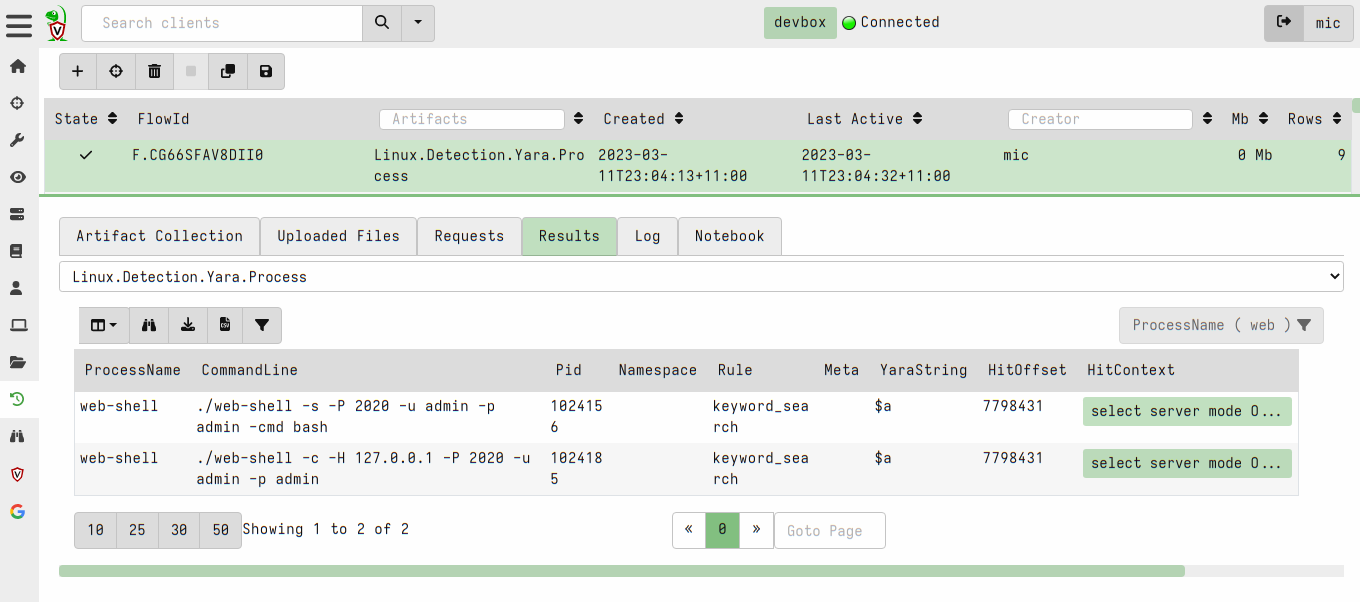 --- <!-- .slide: class="title" --> ## Custom Detection ### Developing custom detection artifacts <img src="detection.jpg" style="height: 400px" > --- <!-- .slide: class="content" --> ## What are we looking for? Ultimately a Web Shell is: 1. A shell process (e.g. Bash or Powershell) 2. Spawned from another process along the call chain 3. One of the processes along the call chain is listening for network connections. Examples: ``` systemd -> screen -> bash -> mc -> bash -> web-shell -> bash systemd -> sshd -> sshd -> bash ``` --- <!-- .slide: class="content" --> ## Writing custom artifacts ### Developing in VQL ```sql -- Get all listening Pids and store in a lookup structure LET ListeningPids <= memoize( key="Pid", query={ SELECT Laddr.ip AS IP, Laddr.port AS Port, str(str=Pid) AS Pid FROM connections() WHERE Status =~ "LISTEN" AND Pid != "0" }) -- A Function to determine if any pid in the Pids list is listening LET IsPidListening(Pids) = SELECT _value FROM foreach(row=Pids) WHERE get(item=ListeningPids, field=str(str=_value)) -- Get all bash processes and their callchain LET CallChains = SELECT Pid, Name, CommandLine, join(array=process_tracker_callchain(id=Pid).Data.Name, sep=" -> ") AS CallChain, process_tracker_callchain(id=Pid).Data.Pid AS CallChainPids FROM process_tracker_pslist() WHERE Name =~ "bash" -- A Suspicious shell is one that is spawned from -- any process which also has a listening port. SELECT Pid, Name, CommandLine, CallChain, { SELECT process_tracker_get(id=_value).Data AS Details FROM IsPidListening(Pids=CallChainPids) LIMIT 1 } AS ListeningProcess FROM CallChains WHERE ListeningProcess ``` --- <!-- .slide: class="content" --> ## Writing custom artifacts ### Testing in a notebook  --- <!-- .slide: class="content" --> ## Writing custom artifacts ### Add a new VQL Cell 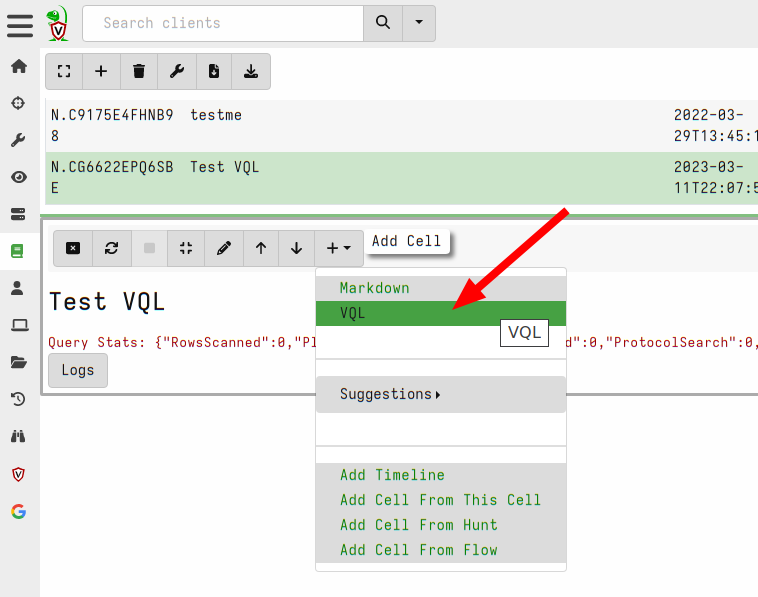 --- <!-- .slide: class="content" --> ## Writing custom artifacts ### Running test VQL on server 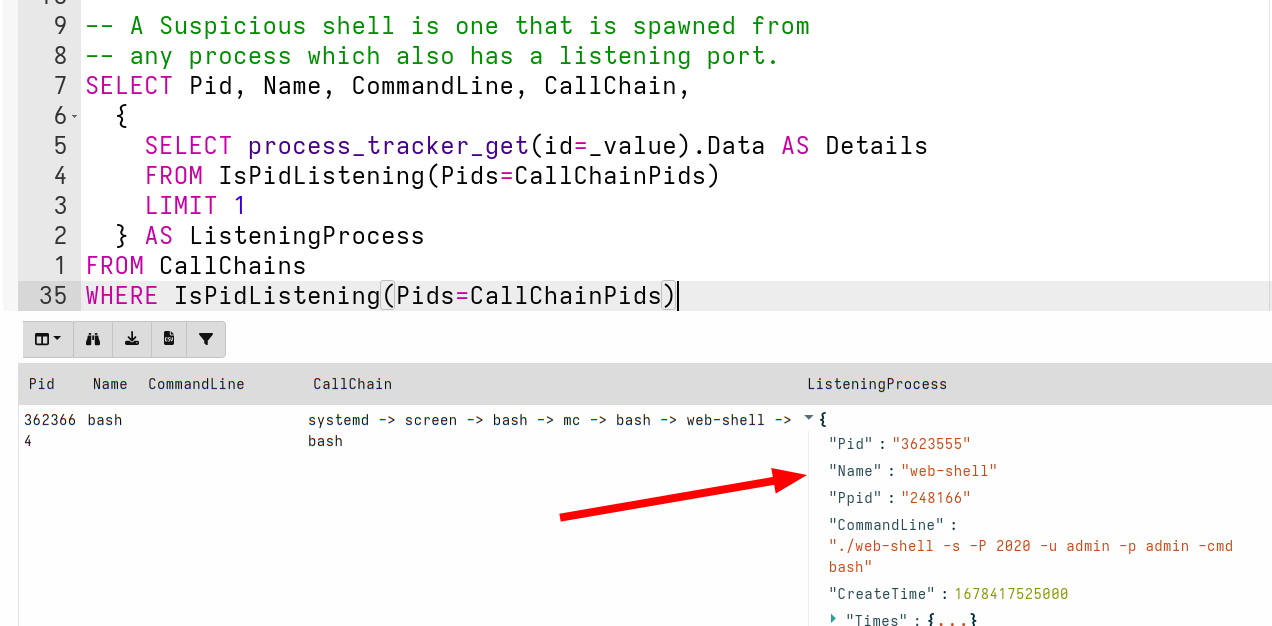 --- <!-- .slide: class="content" --> ## Writing custom artifacts ### Create a new artifact 